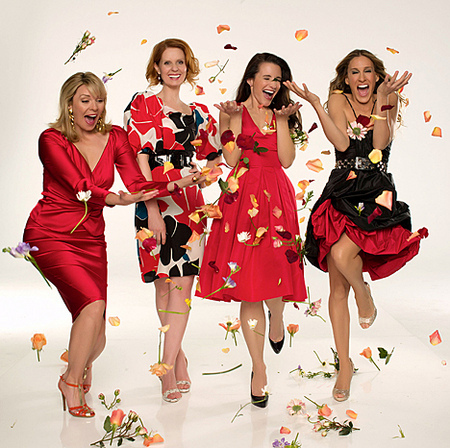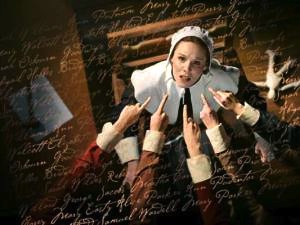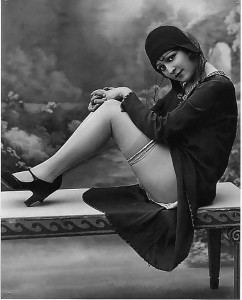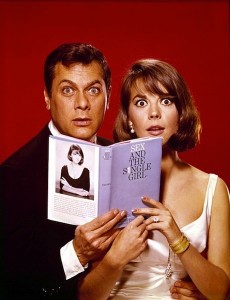Now like any single gal, I’ve been acutely aware of the single girl construct. I’m also resourceful enough to know there are diverse avenues to explore when dividing up the concept, but it’s the more commercially enterprising and idealised narrative I’m going to chinwag about.
The fashionable tenet of being “female, single and fabulous” has transcended insignificance to become both a homogenised consumer and empowerment brand that’s now cooler than ever. Since Audrey Hepburn embodied charming New York “party girl” Holly Golightly, the populist vote sees it as an independent emblem of freedom that has signified its relevance in touching a chord with millions of women who choose to fly solo.
But it’s interesting to note that throughout history its was a grave situation for the single woman to just be. If you’ve read about her in the Old Testament you know what I mean but you can otherwise imagine her as some highly subversive aberration in civilisation because that’s what the vaults of gender history tell us. The 300 years of mass hysteria during the European and American witch hunts subjugated the single woman through a malicious and diabolic gendercide campaign sending hundreds of thousands of single and terrified women gasping to their demise.
Over a period of three centuries being female and single could have cost you your life and it’s an era of wrath that troubles me still. The period between 1480 and 1750 saw our foremothers, young and old, brutally tortured and executed by order of middle aged, jowly faced megalomaniacs of both church and state. Widespread moral panic spread through city and country saw large numbers of vulnerable single women in groups condemned for just looking sideways or just looking like a loose sect of enchantresses who supposedly donned pointy black hats with wide brims.
Of course they were just unmarried women who possibly owned a cat or two, or were well practiced in midwifery and/or indulged in a little herbal healing for the hamlet. As humanitarian pursuits these were no doubt a deadly amalgamation. As Margaret King wrote, for centuries, “while Leonardo painted, Palestrina composed, and Shakespeare wrote,” witches burned.
But fast forward from the voodoo of early times to contemporary pop culture and, luckily, the spirit of the single girl is still with us. In commercial makeover style she’s become a transformational figure, and hell hath no fury as that of Woman demonised in the fires of the Reformation. She is now a world-class witch after all, waving that little vindictive wand of hers about, entrancing all and sundry, a post-modern symbol of influence and liberation. Who would’ve thought it?
Mainstream consumption and a re-education of the single woman today frames her new identity. Her evolution now shows a visible link between glamour and female singledom, and it does have lustre. When it comes to Sex and the City most of us sit back with guiltless abandon watching the funny, likeable and hugely successful show; and, while written by a man, it nonetheless pushed the envelope of women’s modern sexual identity, freely squeezing out every last drop of fabulousness and autonomy. The theme song alone saw me humming and sashaying with the realisation that I really could have it all.
But while women loved the show, men did not. Pallid faced men were known to congregate in clichéd patriarchal domains, tagging it eloquently as ‘Sluts in Stilettos’ – probably for the same reasons that 300 years ago threatened traditional morality and fixed boundaries of heterosexuality. It’s quite scary to think of sexually charged women running free and challenging almighty male control.
The new maxim, indeed, established various forms of female rebellion from the standpoint that it was better to be alone than in an unsatisfactory relationship. It opened up the option of being amorous and on the loose pursuing men in the quest for big orgasms, and/or securing financial independence with career success and goals while generally playing it up as rabid creatures of capitalist consumerism.
Pro-sex feminists of the western world wilfully cheered for these egalitarian goals because, heck, if governments are going to systematically oppress women through various measures then these sassy New York singles may as well take advantage of the expanding choices that capitalism, via “femonomics”, allows them.
And by no means was watching Sex and the City on the box the only medium that challenged humdrum female virtues. One of the first social rebels of the twentieth century, the 1920s flapper, flouted every Victorian norm conceivable. She discarded the “good girl” image by claiming her own sexual revolution and wasn’t called the “Deviant Champion of a new womanhood” for nothing.
The main protagonist of Truman Capote’s novella, Breakfast at Tiffany’s, is a live-for-the-moment free spirit who puts it out there that being single means dating any man at whim, having great social contacts and discarding relationships and responsibilities when they jeopardise her independence.
The explosion of Helen Gurley Brown’s 1962 bestseller, Sex and the Single Girl, sold 3 million copies in the first three weeks. A how-to in having it all with love, sex, and money, it was a stylistic gossipy little primer delivering edicts on everything a ’60s gal needed to know about basic revelry and single lifestyle choices. Apparently Gurley Brown’s husband made a somewhat cockeyed suggestion that she write about how a single girl goes about having an affair. But Gurley Brown thought better, and got on with the job of writing the first ever singleton manifesto.
But the single girl has gone way beyond proving she’s more than Vogue, Givenchy showiness. No longer is she the stunted, desperately unhappy woman looking for any male partner to validate her existence; nor is she the age-old, impotent archetypal damsel in distress. Through the spectrum of modern womanhood, her self-belief system says she is now free to endorse her own existence as an entity in itself.
It’s this popular understanding that entices women to embrace single life because she’s now the lone ranger riding off into the sunset with her cat and cat cage in tow. She stamps a broad-minded blueprint upon her personal life and believes in it from her soul down to her stilettos and her brain down to her birkenstocks.
Through its progression the single gal construct has become a lucrative bonanza. The most admirable thing is the subversion of the stereotypical image – the criticised spinster versus the successful woman which as a rebirth of individual expression is especially rewarding especially when you can call it your own.
The funny, sexy and political take has seen the rise and rise of the single girl and the fall of social expectations that true maturity and responsibility can only come from connection to a man and marriage.
Historical, social and cultural moments have defined her in a myriad of ways but the interest in her seems largely grounded in our own desire to know who we can or should be, whilst perfecting that smoky eye look if we so choose.
So release the shackles of single shame for she is an intimate figure of style when one truly finds her within. And while spite and hatred once besieged our group in the dark passages of history you can safely be assured that you can now go forth with brave heart, for the single woman has, at last, triumphed.
© copyright Justine Hamilton






